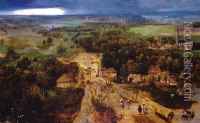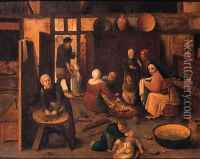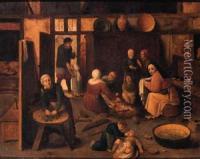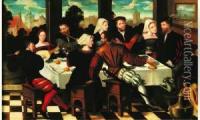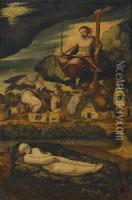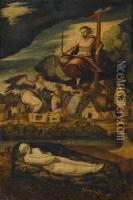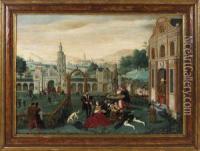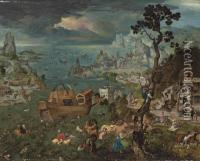Jan van Amstel Paintings
Jan van Amstel, also known as Jan de Hollander, was a Dutch Renaissance painter who was born around the year 1500. Not much is known about his early life, but it is presumed that he was born in the town of Amstelveen or Amsterdam, which is suggested by his surname 'van Amstel', a common practice of the time to associate one's name with their place of origin. His exact date of birth remains uncertain, and similarly, details about his training and early career are largely unknown. However, he is often associated with the Antwerp school of painting, which was a leading center for the arts in the Low Countries during the 16th century.
Jan van Amstel is best known for his detailed landscapes and genre scenes that incorporate numerous figures and display a remarkable attention to detail. His work reflects the transition from the late Gothic style to the more naturalistic approach of the Northern Renaissance. He was influenced by Hieronymus Bosch, Pieter Bruegel the Elder, and the works of other contemporary Flemish artists. Van Amstel's paintings often feature complex compositions with a keen observation of everyday life, imbued with a sense of humor and moral undertones.
Despite his talents, Jan van Amstel did not achieve the same level of fame as some of his contemporaries. Records show that he became a master in the Antwerp Guild of St. Luke in 1535, which suggests that he was active and respected within the artistic community. His death is believed to have occurred around 1540, but, similar to his life, the details surrounding his death are also obscure. No known self-portraits or personal documents have been attributed to him, leaving art historians to piece together his biography from his surviving works and the scant historical records that mention his name.
Jan van Amstel's works are housed in various museums and collections around the world. While he did not leave behind a large body of work, his contributions to Dutch and Flemish painting have been recognized by art historians, and he is considered an important figure in the development of landscape and genre painting in Northern Europe during the Renaissance era.
